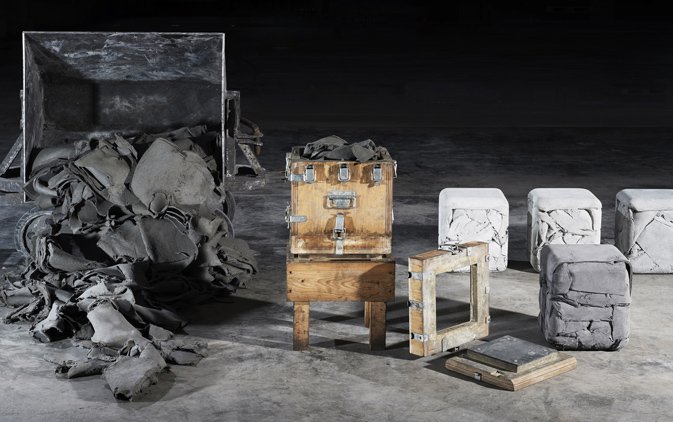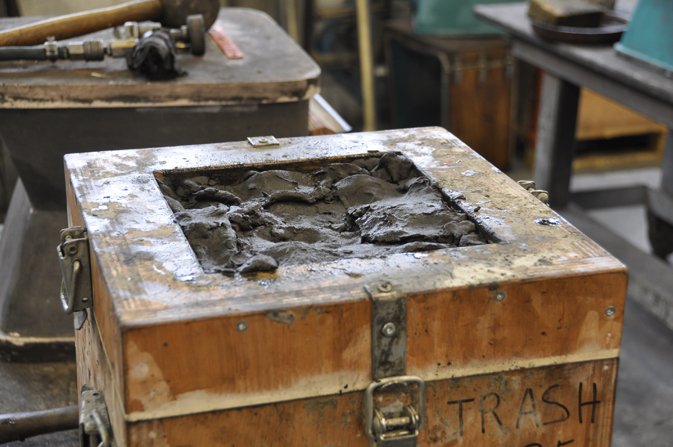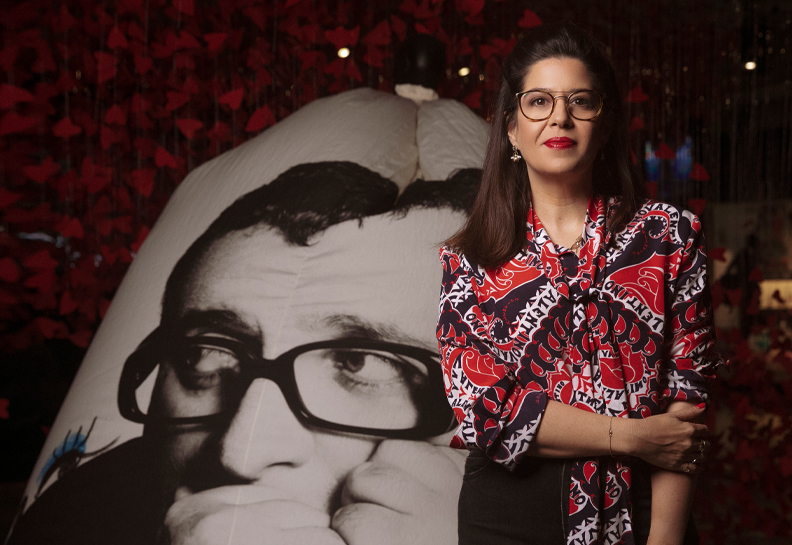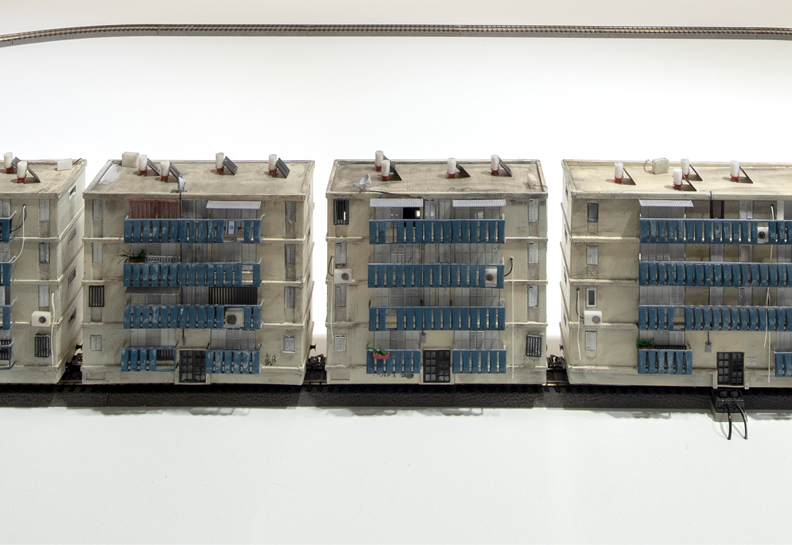Concrete becomes fabric and fabric becomes concrete under the hands of young designer Nicolas le Moigne.
Concrete becomes fabric and fabric becomes concrete under the hands of young designer Nicolas le Moigne. In his short visit to Israel he relates how scraps of concrete daily discarded by workers are shaped to create unique pieces of art. This is an interview with a designer who breaks conventions, not only metaphorically.
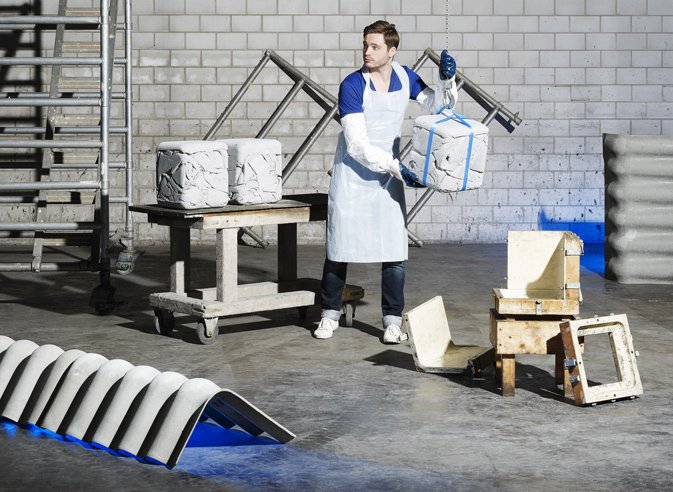
I met Nicolas le Moigne for a conversation at the Materials Library at Design Museum Holon. We encountered his work for the first time last March when it was displayed as part of the exhibition “The State of Things – Design and the 21st Century” held at the museum and this is his first visit to Israel. Nicolas is a young designer residing in Switzerland where he works as an independent designer and teaches industrial design.
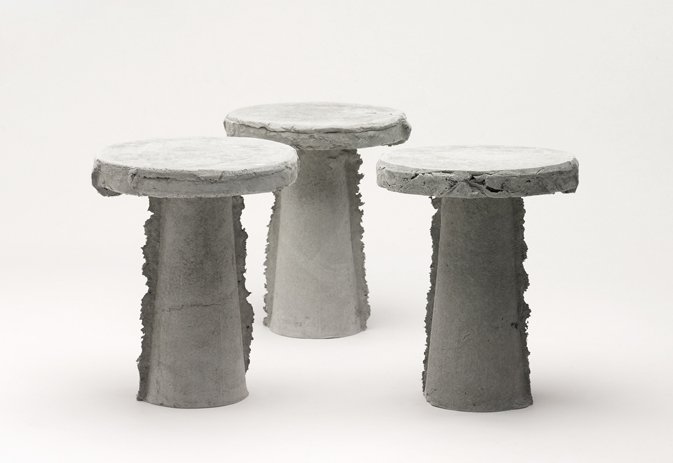
Looking at Nicolas’ work, it is difficult to ignore the tactile connection embroidered throughout the stages of the project. The original material is intertwined with fibers. The rolled material seems like fabric, wool or perhaps felt. The final product too reminds us of condensed fabrics, much like a cube, each cube having different creases. The border between the materials blurs: concrete becomes fabric, fabric becomes concrete.During the past years, Nicolas has been working closely with Eternit on furniture-related projects. The connection between matter, factory and an interesting, intriguing designer is mainly expressed in his last work, Trash Cube, on which he is currently working.
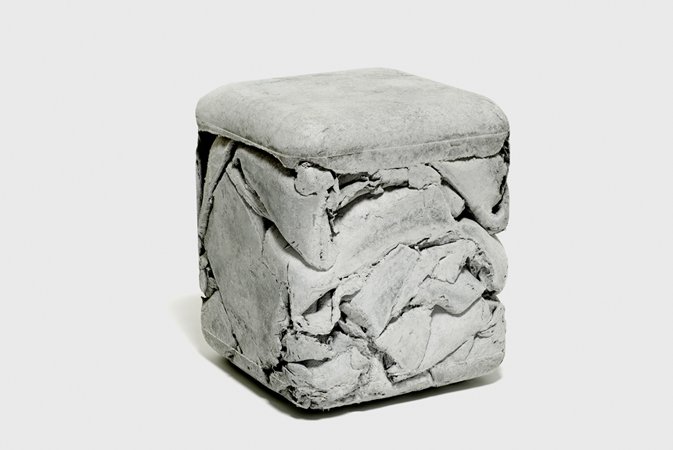
Tell us about your recent work Trash Cube”This work is under the last stages of development. This is the first time that the factory asked me to design a product. The process of thinking started already when I worked on my last piece Slip Stool which was displayed at the first exhibition of the Design Museum Holon “The State of Things”. During the process of work in the factory, I saw huge amounts of material being discarded on a daily basis. After being dried, it is no longer possible to work with. I made a stool from scraps of material which I squeezed into a mold. The material is squashed between the two parts of the mold, overflows, thus creating partinglines which hint at the creative process. The stool was made in a limited edition of 12 units which were exhibited at Gallery Libby Sellers in London and subsequently sold to collectors. My goal in this project was fore and foremost to create a product exploiting all the discarded pieces of concrete. After the project proved to be a success, the factory was interested in recycling and considered it as an additional opportunity to recover the company’s image. They asked me to design an object which is easier to produce, a basic, non-complex mold not requiring finishes and manual work. This is how Trash Cube came to life.
I designed a much simpler mold in the shape of a square with rounded edges. I wanted the mold to contain maximum material so that there is a real value to the theme of recycling. Instead of disposing the scraps of concrete, at the end of each working day they are placed directly in the mold. In fact, the mold functions as a trash bin or perhaps it is the trash bin that functions as a mold. My plan for the future is to produce dozens or even hundreds of such molds each day.In contrast to previous works, here there is no need for manual work with a hammer and therefore, the entire production process is fast and economic. All a worker must do is squeeze the material into the mold, and this is why the final product may be sold for an extremely reasonable price of approximately $75. The intention is that everyone would be able to purchase a stool – a unique piece of art – for less than $100.
Click here for the rest of the interview at the Materials Library – iMatter website
